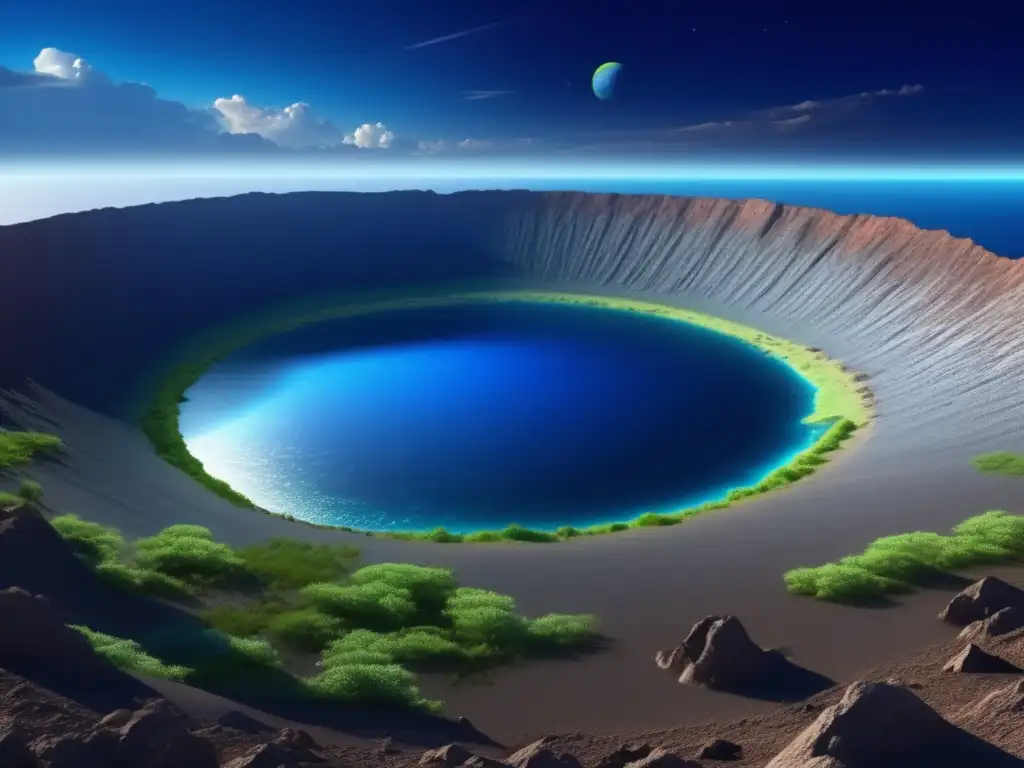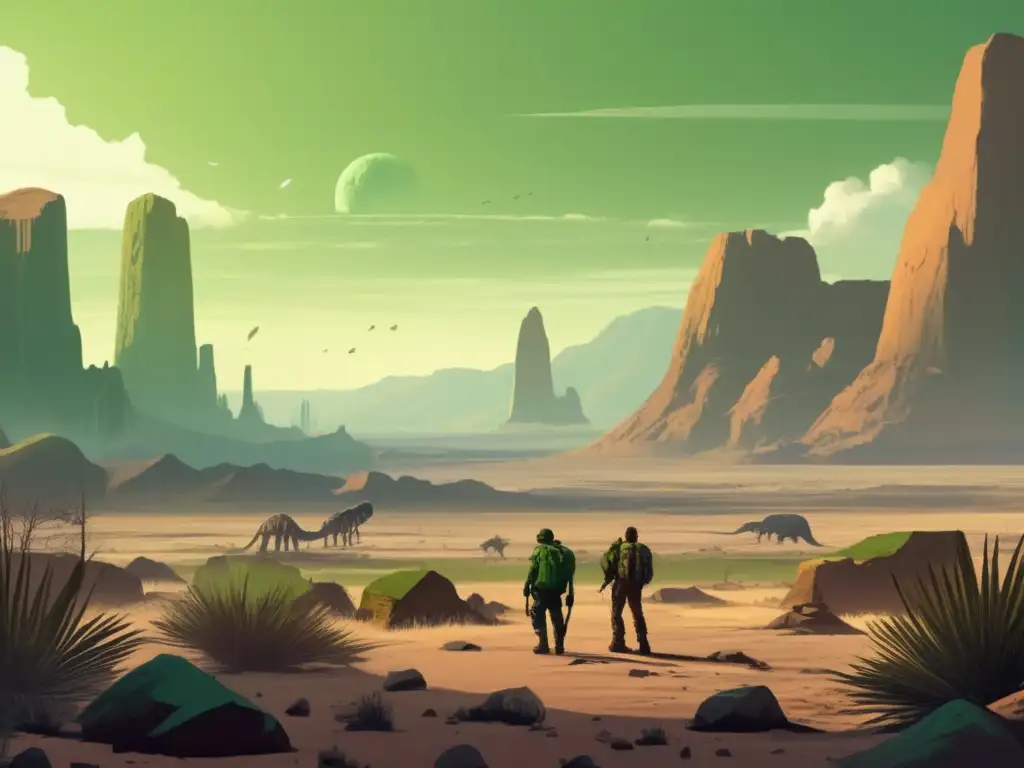The Chicxulub Crater: A Graveyard For Dinosaurs

Introduction
The Chicxulub crater is a large impact crater located in the Yucatan Peninsula of Mexico. It was formed approximately 66 million years ago, and is believed to be linked to the extinction of the dinosaurs. This crater has been a topic of fascination among scientists and researchers since its discovery. In this article, we will explore the Chicxulub crater's formation, its impacts on the environment and the consequences for life on Earth.
The Formation of the Chicxulub Crater

Impact Date and Location
The Chicxulub crater was formed by an asteroid impact that occurred about 66 million years ago. The asteroid, believed to be around 10-15 kilometers in diameter, struck the Earth with a force equivalent to billions of atomic bombs, causing widespread devastation and loss of life. The asteroid is thought to have hit the Earth near the present-day town of Chicxulub in Mexico, leaving behind a vast crater that measures approximately 180 kilometers in diameter.
The Impact and Its Consequences
The impact of the asteroid that created the Chicxulub crater was catastrophic. The energy released by the impact caused massive tsunamis, earthquakes, and wildfires, which are believed to have lasted for months. The impact also released a vast amount of dust and debris into the atmosphere, which blocked out the sun and cooled the planet's climate.
The environmental disturbance caused by the asteroid impact is believed to have had a significant impact on the planet's ecosystems, leading to the extinction of approximately 75% of all species on Earth, including the dinosaurs.
The Discovery of the Chicxulub Crater
The Chicxulub crater was not discovered until the late 1970s. It was found by geophysicists who were studying anomalies in the Earth's gravity field. The study revealed a circular structure beneath the surface of the Yucatan Peninsula. Subsequent research confirmed that this structure was a massive impact crater.
The Environmental Impacts of the Chicxulub Crater

Climate Change
One of the most significant environmental impacts of the Chicxulub crater was the climate change that followed the asteroid impact. The impact caused a massive release of smoke, soot, and other particles into the atmosphere, which blocked out the sun and reduced temperatures across the planet. This cooling effect resulted in a "nuclear winter" that lasted for months, or possibly even years, after the impact.
The cooling effect had a significant impact on the planet's ecosystem, causing widespread extinctions among plants and animals. The food chain was disrupted, leading to the extinction of many species that relied on specific food sources.
Recovery of Life After the Impact
Despite the massive loss of life following the Chicxulub impact, life on Earth eventually recovered. Small mammals, birds, and reptiles managed to survive and eventually evolve into the diverse range of species seen today. The extinction of the dinosaurs also allowed for the rise of new types of animals, such as mammals, which eventually became the dominant species on Earth.
Modern-Day Implications
The Chicxulub crater continues to be a topic of interest for scientists and researchers today. The study of the impact provides valuable information on the evolution of life on Earth and the consequences of asteroid impacts on the planet. The knowledge gained from studying the Chicxulub impact also has significant implications for understanding the threat posed by near-Earth asteroids and designing strategies to prevent catastrophic asteroid impacts.
FAQs

-
What caused the extinction of the dinosaurs?
The extinction of the dinosaurs is believed to have been caused by a massive asteroid impact that created the Chicxulub crater in Mexico approximately 66 million years ago.
-
What were the environmental impacts of the Chicxulub impact?
The Chicxulub impact caused a cooling effect on the planet, resulting in a "nuclear winter" that lasted for months or possibly even years. This cooling had a significant impact on the planet's ecosystem, leading to the extinction of many species.
-
How did life on Earth recover after the Chicxulub impact?
The small mammals, birds, and reptiles managed to survive and eventually evolve into the diverse range of species seen today. The extinction of the dinosaurs also allowed for the rise of new types of animals, such as mammals, which eventually became the dominant species on Earth.
-
Why is the Chicxulub impact important for modern-day research?
The study of the Chicxulub impact provides valuable information on the evolution of life on Earth and the consequences of asteroid impacts on the planet. The knowledge gained from studying the Chicxulub impact also has significant implications for understanding the threat posed by near-Earth asteroids and designing strategies to prevent catastrophic asteroid impacts.
-
What can be learned from studying the Chicxulub impact?
Studying the Chicxulub impact provides valuable information on the evolution of life on Earth and the consequences of asteroid impacts on the planet. The knowledge gained from studying the Chicxulub impact also has significant implications for understanding the threat posed by near-Earth asteroids and designing strategies to prevent catastrophic asteroid impacts.
Conclusion
The Chicxulub crater is a stark reminder of the potential devastation that can be caused by asteroid impacts on Earth. The impact of the asteroid that created the Chicxulub crater had a significant impact on the planet's ecosystems, leading to the extinction of many species, including the dinosaurs. However, life on Earth eventually managed to recover, providing a glimpse of the resilience of nature.
Studying the Chicxulub impact provides vital information on the evolution of life on our planet and the consequences of asteroid impacts. It also plays an essential role in developing strategies to prevent catastrophic asteroid impacts on Earth. We hope that this article has provided valuable insights into the Chicxulub crater and its impacts on our planet.
Additional Resources

For additional information on the Chicxulub crater, please see the following:
- NASA - Chicxulub Asteroid Impact: New Evidence
- BBC - Chicxulub crater: The asteroid impact that killed the dinosaurs
- Smithsonian Magazine - What Happened the Day the Dinosaur Died?
 Wiped Out: How Asteroids Ended The Reign Of Dinosaurs
Wiped Out: How Asteroids Ended The Reign Of Dinosaurs The Asteroid Theory: Decoding The Mass Extinction Event
The Asteroid Theory: Decoding The Mass Extinction Event Fire From The Sky: The Impact Winter And Dinosaur Extinction
Fire From The Sky: The Impact Winter And Dinosaur ExtinctionIf you want to discover more articles similar to The Chicxulub Crater: A Graveyard For Dinosaurs, you can visit the Asteroids and Dinosaurs category.
Leave a Reply

Articulos relacionados: